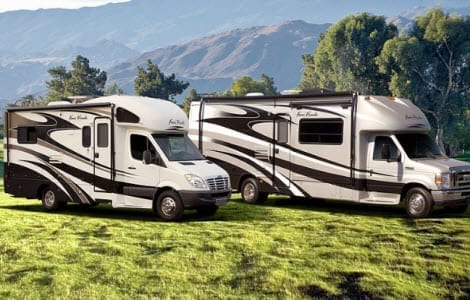Reviewing and renewing coverage is just as important as opening up the vehicle itself.
 For many Americans, spring cleaning doesn’t just involve a massive washing of everything in their homes, but it also signals the start of the recreational vehicle season, and a major part of that is making sure that the right RV insurance is in place for the year.
For many Americans, spring cleaning doesn’t just involve a massive washing of everything in their homes, but it also signals the start of the recreational vehicle season, and a major part of that is making sure that the right RV insurance is in place for the year.
Starting up your RV for the first time after the winter takes a few important precautions.
As spring and camping season get started, there is a strong inclination to simply leap up behind the wheel and get going, but it is very important that certain steps be taken to “spring clean” a recreational vehicle so that it will be safe, ready, and covered throughout the length of its use. Maintenance and RV insurance coverage are the two most important steps to take to bring the vehicle out of winter mode and to prepare it for the road. While it is a good idea to schedule a professional servicing, there are many things that an owner can do in order to save money and be certain that the vehicle all set to go.
RV insurance should be one of the very first steps, even before taking the vehicle in to be serviced.
The following are some of the best spring cleaning steps that can be taken to ensure the best and safest operation of an RV:
• The interior should receive a cleaning from top to bottom, letting fresh air in by opening up all of the windows and the vents.
• Any spaces that have been shut up – such as drawers and cupboards – should be checked for damage from rodents, insects, water, or other issues.
• All appliances, electrical outlets, smoke detectors, carbon monoxide detectors, and other devices should be tested
• Fire extinguishers should be working, charged, and accessible.
• Filters should be replaced in the AC system, which should be run. If necessary, clean it out.
• Check electrical systems and run the generator for a bit of time.
• Change filters and oil
• Replace any light bulbs that have burnt out and ensure that dashboard panel lights and functions are all working.
• Outside, take off any vent lids from having winterized the RV.
• Check accessory and body panels for damage.
• Look for leaks or cracks in weather stripping, seams, and tires.
• Check tire inflation levels
• Check exterior compartments such as those for luggage and storage.
• Test all moving parts on the exterior of the vehicle, from door hinges to wipers.
• Be sure that you have the right RV insurance policy to protect yourself against the unexpected.
